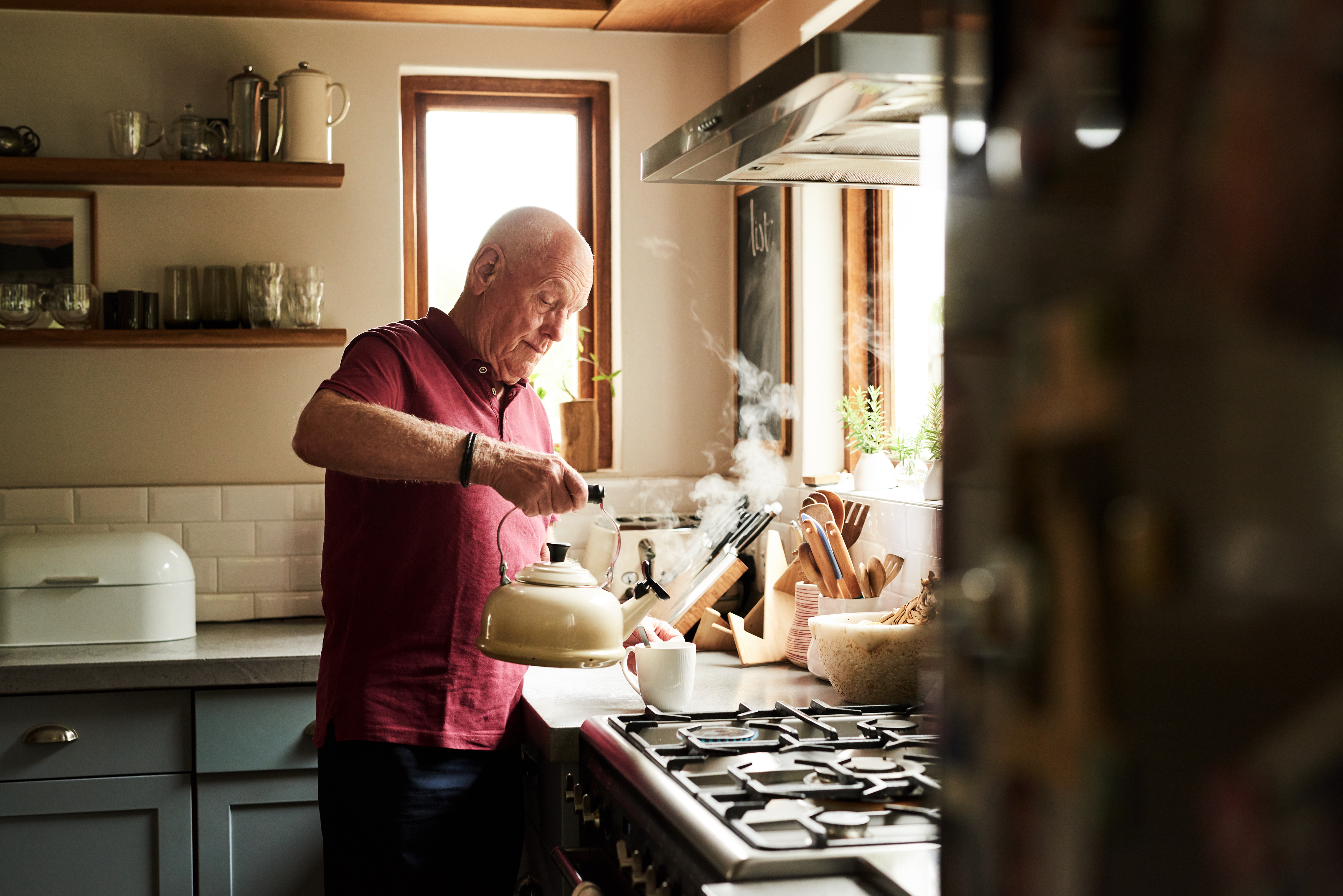AARP Hearing Center
Reposted from aarp.org
How to make your home safer and easier to navigate

If your loved one has dementia, you’ll need to make the conventional home modifications an older person needs — and a great many others. People with Alzheimer’s disease or other forms of dementia literally see the world in a new, often confusing way. Everyday things can be frightening — an oil spot can be perceived as a hole, shadows may be seen as sinister beings, a “stranger" may appear in the mirror. Making a home safe and easier to navigate is a multipart process.
When Dementia Alters Perceptions, Alter Environment
STEP BY STEP
Step 1. Contact your local Area Agency on Aging and the Alzheimer's Association. They can give guidance and can usually recommend local aging life care experts, occupational or physical therapists, geriatric care managers or aging care experts and certified aging-in-place specialists who can come to your home and advise on safety issues.
Step 2. Take a tour of your own house, looking at it from your loved one’s compromised point of view. Dementia affects cognitive abilities, depth perception, balance, coordination, memory and strength. People with the disease have difficulty understanding instructions, accurately interpreting the world around them and making sound choices. Even if your loved one is still managing well, prepare your house for the future, ideally before moving day. People with dementia take more time to adjust and may not be able to adapt to a changed environment. Little things — like rearranging the furniture — can seem sudden and unsettling. Big changes like redecorating can be alarming.
Step 3. Print out the AARP checklist for home safety. Start in the front yard. Make a to-do list as you go.
- Mark edges of steps with neon, glow-in-the-dark tape.
- Repair cracked pavement and uneven bricks. Stepping stones are a tripping point unless they are flush with the ground.
- Clear the walkway. Get in the habit of removing slip-and-fall hazards: leaves, snow, ice, moss, the garden hose. Relocate bikes, toys, balls, chalk, jump ropes, garden gnomes and lawn ornaments. Trade thick welcome mats for thin, rubber-backed mats with edges flush with the ground. For people with dementia, a cluttered path is like being bombarded with too much information; they are unable to weed out the unimportant bits.
- Look again after dark. Spotty lighting can create shadows, which can be perceived as deep holes or edges that must be stepped over or around. Some people with dementia see shadows as burglars, demons or dangerous animals. Well-placed, bright outdoor lighting can prevent falls, anxiety and fear.
Step 4. Inspect each room.
People with dementia have an easier time deciphering a room when the walls are painted in a pale color that reflects light and contrasts with the floor. Also note:
- Busy wallpaper patterns can be confusing.
- Wall mirrors, especially large ones, can make the room harder to process. It’s difficult to separate what’s real from the reflection — which can cause confusion, fear and anxiety.
- Slippery throw rugs, curled edges on carpets, footstools and toys can be stumbling blocks for your loved one. Scan the floor. Put a rubber-backed rug in a single bright color in front of doors to help the person recognize that they are at the entrance. (A dark rug can be seen as a hole in the floor.)
- Clutter is confusing. You see your collectibles as charming; people with dementia see them as a visual hodgepodge. The stuff of everyday living — stacks of papers, books, mugs, loose change, pictures, a laptop — make it hard to decipher the room. A minimalist look works best for those with dementia.
- Strong, low-glare lighting and sensor night-lights will help your family member with visual perception and physical coordination. Arrange lights to prevent or minimize shadows.
- Visual and perceptual impairments can make glass doors seem like open space. Put stickers, bright tape or removable wall decals on patio doors.
Step 5. Inspect the bathroom.
- Consider removing locks from bathroom doors to prevent your loved one from getting locked in or locking you out.
- Water can make tile or linoleum slippery. Use large nonskid bathmats.
- Install grab bars. An occupational, physical or certified aging-in-place therapist can best evaluate your loved one's needs and suggest placement of safety grab bars. (If your loved one’s doctor orders a consultation, see if health insurance will cover the cost). Many grab bars are designed to also serve as towel bars, toilet paper holders and in-shower shelves.
- Ensure that outlets in the bathroom have a ground fault circuit interrupter (GFCI) or are protected by a GFCI circuit so they will shut off if they get wet.
- Install temperature-controlled water faucets to avoid scalding.
- Put medicines in a lockbox and block access to cleaning supplies and razors. You may want to switch to a cordless electric shaver.
- Does your family member need a raised toilet seat? A shower chair?
- If you are installing a new bathroom for your family member, use a frameless walk-in shower with a sloped floor instead of a step-over threshold.
Step 6. Focus on bedrooms.
- You may want to put a lock on your bedroom door and keep your personal and potentially dangerous items out of your loved one’s reach.
- Take the lock off your loved one’s door to be certain that no one is locked in or out.
- An audio monitor between the two rooms will let you hear if your loved one is out of bed or calling for help.

Step 7. Check the kitchen.
- Dementia can dull sensitivity to temperature. Consider automatic temperature-controlled water faucets.
- Install an automatic device to turn off the stove after a set period of time if no movement is detected.
- Unplug the microwave.
- Make food easy to find and reach. Climbing on step stools, chairs or counters is risky for people with dementia.
- Store knives and electric appliances in a cabinet with a childproof lock.
Step 8. Check the den/home office.
- Wheeled swivel chairs can be a danger.
- Make sure bookshelves are anchored to walls.
Step 9. Go outside.
- A fenced-in yard will allow your family member to go outside. Make sure gates lock.
- Look for and remove hazards.
- Light pathways and steps.
- Keep walkways and patios clear of fallen leaves and branches, ice and snow. Corral any toys.
- Keep the grill locked and covered when not in use.
- If you have a swimming pool, fence it in separately, and keep the gate locked.
- Consider an automatic rolling pool cover that is made to withstand the weight of people and lock in place. Use the cover whenever the pool is not monitored by someone capable of rescuing a non-swimmer — even if you’ll just be gone a few minutes.
- If you have an above-ground pool, a pull-up and locking ladder is a must. Make sure it is properly installed.
- Use a pool alarm with an electric sensor that will trip a loud, pulsating alarm — outside and in the house — when anyone enters the water. The alarm uses an on-off key.
- Handrails and stairway rails help avoid slipping on stairs and steps.
Additional articles from AARP on dementia caregiving:































































